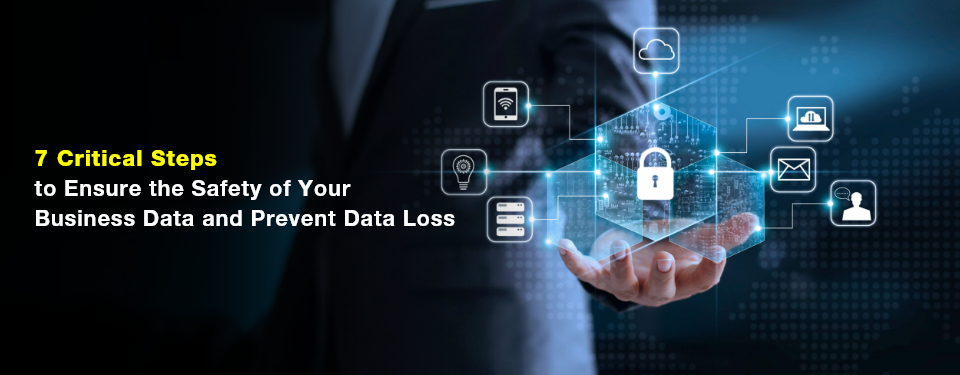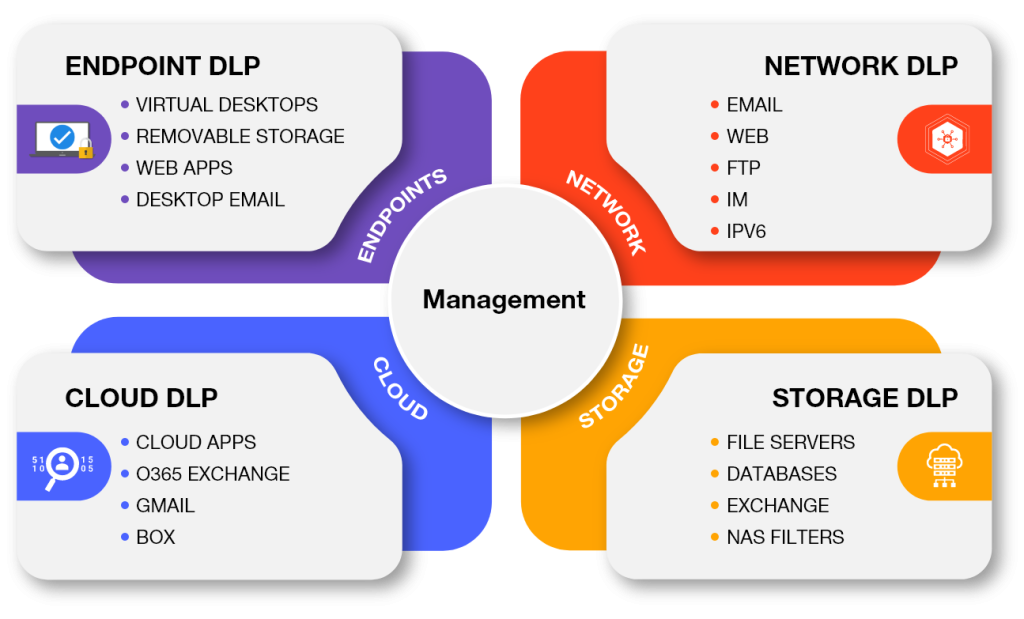
Posted On Jun 06 2024 | 11:06
Data loss can be catastrophic, resulting in financial losses, operational disruptions, and damage to your brand reputation. With cyber threats on the rise, it is crucial for businesses to take proactive measures to safeguard their valuable data.
By following the steps below, you can create a robust defense system that mitigates the risk of data breaches, unauthorized access, and accidental loss. Whether you are a small startup or a large corporation, the implementation of these strategies can help safeguard your business and give you peace of mind.
- Malware and ransomware attacks: Malware refers to malicious software designed to infiltrate computer systems and steal or encrypt sensitive data. Ransomware, a type of malware, holds your data hostage until a ransom is paid.
- Phishing attacks: Phishing attacks involve tricking individuals into sharing sensitive information, such as passwords or credit card details, through deceptive emails or websites.
- Insider threats: Employees or trusted individuals with access to your business data can intentionally or accidentally compromise its security.
- Physical theft or damage: Physical theft of devices or damage to servers can result in the loss of critical data.
Before we delve into the steps to prevent data loss, let’s take a moment to understand the impact it can have on businesses and the key components of data loss prevention.
Data loss can have severe consequences for businesses, regardless of their size. The financial impact can be significant, with the cost of data breaches and data loss continuing to rise year after year. Additionally, the loss of customer trust and damage to brand reputation can have long-lasting effects.
To effectively prevent data loss, businesses need to consider the following key components:
- Protecting Endpoints: Securing individual endpoints such as computers, mobile phones, and tablets by implementing encryption and blocking transfers to illegitimate users in real-time.
- Detecting Data Leaks: Establishing a normal activity baseline and monitoring for anomalies to immediately stop unusual or suspicious data transfers and alert network security staff.
- Monitoring Remote Cloud Storage Servers: Mitigating risks and keeping data secure by monitoring remote cloud storage servers.
- Enforcing Security in BYOD Environments: Securing mobile workforces by enforcing security policies in Bring Your Own Device (BYOD) environments.
- Providing Data Visibility: Breaking down silos by providing data visibility across large organizations, helping teams achieve more by ensuring seamless technology and process integration

- Artificial intelligence and machine learning: AI and machine learning technologies are increasingly being used to detect and prevent data breaches by analyzing large volumes of data and identifying patterns indicative of security threats.
- Endpoint detection and response (EDR): EDR solutions provide real-time visibility into endpoint devices, allowing for rapid detection and response to potential security incidents.
- Cloud-based data loss prevention: With the increasing adoption of cloud services, businesses are leveraging cloud-based data loss prevention solutions to protect their data stored in the cloud.
- Enforcing Security in BYOD Environments: Securing mobile workforces by enforcing security policies in Bring Your Own Device (BYOD) environments.
- Data loss prevention as a service (DLPaaS): DLPaaS offers to provide businesses with comprehensive data loss prevention capabilities without the need for extensive infrastructure and resources.
- Stay informed: Stay updated with the latest cybersecurity news and trends to understand potential threats and emerging technologies that can enhance your data loss prevention strategies.
- Regularly assess and update your security measures: Regularly assess the effectiveness of your data loss prevention measures and update them as needed. Implement new technologies and practices that align with your business needs and the evolving threat landscape.
- Engage with cybersecurity experts: Consider partnering with cybersecurity experts or consultants who can provide specialized knowledge and guidance in strengthening your data loss prevention strategies.
The safety of your business data is paramount in today’s digital world. By implementing the seven critical steps outlined in this article, you can ensure the security of your data and protect your business against potential data loss incidents.
From implementing strong access controls and user authentication to educating your employees about data security best practices, each step plays a crucial role in creating a robust defense system. Additionally, regularly backing up your data, encrypting sensitive information, and monitoring data access and usage are essential components of data loss prevention.
Finally, creating a comprehensive disaster recovery plan and staying updated with the latest trends in data loss prevention allows you to minimize the impact of data loss incidents and protect your business from evolving threats.
Don’t wait until it’s too late. Schedule a one-to-one with our experts now to safeguard your business data. With the right strategies in place, you can protect your business and ensure the safety of your valuable data.
